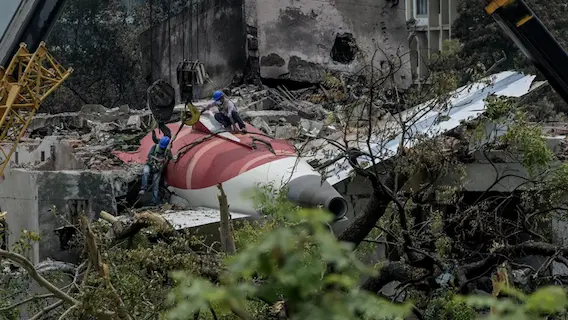
The Pilots’ Association has accused investigators of prematurely blaming cockpit crew.
I. The Crash and the Controversy: What the AAIB Report Revealed
On June 12, 2025, Air India Flight AI171, a Boeing 787-8 Dreamliner en route from Ahmedabad to London, crashed just 32 seconds after takeoff, killing 260 people, including 19 on the ground. The Aircraft Accident Investigation Bureau (AAIB) released its preliminary report on July 11, citing a dual engine shutdown caused by the fuel control switches being moved from “RUN” to “CUTOFF” within one second of each other.
Key findings from the report:
- The cockpit voice recorder (CVR) captured one pilot asking, “Why did you cut off?” and the other replying, “I didn’t”.
- The fuel cutoff occurred at 180 knots, the aircraft’s peak speed during climb.
- A Ram Air Turbine (RAT) was deployed, indicating loss of hydraulic power.
- One engine briefly relit, but the aircraft failed to regain altitude and crashed into a hostel near the airport.
The AAIB also referenced a 2018 FAA advisory warning of potential disengagement of the fuel switch locking mechanism, which Air India reportedly did not act upon, citing its non-mandatory status.
II. Pilots Push Back: Allegations of Bias and Secrecy
The Airline Pilots’ Association of India (ALPA-I) has strongly criticized the AAIB’s report, accusing it of a “presumption of pilot guilt” and a lack of transparency. ALPA-I President Captain Sam Thomas stated:
“The tone and direction of the investigation suggest a bias toward pilot error. We categorically reject this presumption and insist on a fair, fact-based inquiry.”
ALPA-I’s concerns include:
- The report was leaked to international media before official release.
- It lacked responsible official signatures or attribution.
- Experienced pilots were excluded from the investigation team.
- The association was not allowed to participate, even as observers, undermining public trust.
The union also flagged a critical service bulletin about the fuel switch gates and questioned whether Air India had implemented the recommended checks prior to the flight.
III. Accountability and Aviation Safety: What Comes Next?
The AAIB maintains that its findings are preliminary and not intended to assign blame. However, the controversy has reignited debate over:
- Cockpit design flaws and switch ergonomics
- Human factors vs mechanical failure
- Transparency in accident investigations
- Training protocols for abnormal scenarios
Aviation experts remain divided. Some argue the guarded toggle switches require deliberate action, making accidental activation unlikely. Others point to the confused cockpit exchange as evidence of a possible technical malfunction or inadvertent error.
Meanwhile, calls for reform are growing louder:
- ALPA-I demands observer status in future investigations
- Safety advocates urge mandatory implementation of FAA advisories
- Legal experts stress the need for independent oversight of AAIB procedures
The final report is expected by June 2026, and its conclusions could shape India’s aviation safety framework for years to come.
Stay updated with the latest news on Rapido Updates. Keep yourself updated with The World, India News, Entertainment, Market, Automobile, Gadgets, Sports, and many more